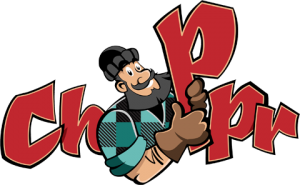on December 3, 2024

Developing custom WordPress themes requires a solid understanding of the platform’s core functions. These functions are the backbone of WordPress, enabling developers to create dynamic, feature-rich, and highly customizable themes. By mastering essential WordPress functions, you can enhance the functionality of your themes while maintaining best practices for performance and usability.
This guide explores the most important WordPress functions every theme developer should know and how to use them effectively.
Why Understanding Essential WordPress Functions Matters
WordPress functions simplify the development process by providing pre-defined tools for common tasks.
- Improve Efficiency: Reduce the need for repetitive code.
- Enhance Functionality: Add dynamic features like menus, widgets, and custom post types.
- Boost User Experience: Ensure your themes are intuitive and user-friendly.
Learning these functions is key to developing robust themes that meet client expectations and align with modern web standards.
Adding Theme Support
Adding theme support ensures compatibility with core WordPress features.
add_theme_support()
This function allows you to enable specific WordPress features in your theme, such as post thumbnails, custom headers, and HTML5 support.
Example:
function my_theme_setup() {
add_theme_support( 'post-thumbnails' );
add_theme_support( 'title-tag' );
add_theme_support( 'custom-header' );
add_theme_support( 'html5', array( 'search-form', 'comment-form', 'gallery' ) );
}
add_action( 'after_setup_theme', 'my_theme_setup' );
Learn more about add_theme_support() at the WordPress Developer Handbook.
Creating Navigation Menus
Navigation menus improve site usability and are easy to implement with WordPress functions.
register_nav_menus()
This function registers custom menus for your theme.
Example:
function my_theme_menus() {
register_nav_menus( array(
'primary' => __( 'Primary Menu', 'my-theme' ),
'footer' => __( 'Footer Menu', 'my-theme' )
));
}
add_action( 'after_setup_theme', 'my_theme_menus' );
wp_nav_menu()
Use this function to display menus in your theme.
Example:
wp_nav_menu( array(
'theme_location' => 'primary',
'container' => 'nav',
'menu_class' => 'menu-primary'
));
Explore more menu-related functions at WordPress Codex.
Managing Styles and Scripts
Properly enqueuing styles and scripts ensures compatibility and reduces conflicts.
wp_enqueue_style()
This function adds stylesheets to your theme.
Example:
function my_theme_styles() {
wp_enqueue_style( 'main-style', get_stylesheet_uri() );
wp_enqueue_style( 'custom-style', get_template_directory_uri() . '/css/custom.css' );
}
add_action( 'wp_enqueue_scripts', 'my_theme_styles' );
wp_enqueue_script()
This function adds JavaScript files to your theme.
Example:
function my_theme_scripts() {
wp_enqueue_script( 'main-script', get_template_directory_uri() . '/js/main.js', array('jquery'), '1.0', true );
}
add_action( 'wp_enqueue_scripts', 'my_theme_scripts' );
Displaying Dynamic Content
Dynamic content makes your theme adaptable to user-generated data.
the_title() and the_content()
These functions display the title and content of a post or page.
Example:
if ( have_posts() ) :
while ( have_posts() ) : the_post();
the_title( '<h1>', '</h1>' );
the_content();
endwhile;
endif;
get_the_excerpt()
This function retrieves a summary of a post.
Example:
echo get_the_excerpt();
More information can be found in the WordPress Loop Documentation.
Creating Sidebars and Widgets
Custom sidebars and widgets add flexibility to your theme’s layout.
register_sidebar()
This function registers a widget area for your theme.
Example:
function my_theme_sidebar() {
register_sidebar( array(
'name' => __( 'Main Sidebar', 'my-theme' ),
'id' => 'main-sidebar',
'before_widget' => '<div class="widget">',
'after_widget' => '</div>',
'before_title' => '<h3 class="widget-title">',
'after_title' => '</h3>',
));
}
add_action( 'widgets_init', 'my_theme_sidebar' );
dynamic_sidebar()
Use this function to display the sidebar in your theme.
Example:
if ( is_active_sidebar( 'main-sidebar' ) ) {
dynamic_sidebar( 'main-sidebar' );
}
Customizing the Header and Footer
The header and footer are key components of any WordPress theme.
get_header() and get_footer()
These functions include the header and footer files in your theme templates.
Example:
get_header();
get_footer();
Customize header and footer templates in header.php and footer.php respectively.
Managing Post Thumbnails
Post thumbnails (featured images) enhance the visual appeal of your content.
set_post_thumbnail_size()
Define the default size for post thumbnails.
Example:
set_post_thumbnail_size( 150, 150, true );
the_post_thumbnail()
Display the post thumbnail in your template.
Example:
if ( has_post_thumbnail() ) {
the_post_thumbnail( 'thumbnail' );
}
Creating Custom Post Types
Custom post types expand WordPress beyond blogs and pages.
register_post_type()
Use this function to create custom post types.
Example:
function my_custom_post_type() {
register_post_type( 'portfolio', array(
'labels' => array(
'name' => __( 'Portfolio', 'my-theme' ),
'singular_name' => __( 'Portfolio Item', 'my-theme' )
),
'public' => true,
'has_archive' => true,
'supports' => array( 'title', 'editor', 'thumbnail' ),
));
}
add_action( 'init', 'my_custom_post_type' );
Find additional details on custom post types at the WordPress Codex.
SEO and Performance Optimization
WordPress functions also support SEO and performance enhancements.
wp_head() and wp_footer()
These functions allow plugins and themes to insert code into the <head> or <footer> sections.
Example:
wp_head();
wp_footer();
get_template_part()
Use this function to include reusable template parts, such as headers or loops.
Example:
get_template_part( 'template-parts/content', 'page' );
Conclusion
Mastering essential WordPress functions is crucial for creating professional, dynamic, and user-friendly themes. From enabling core features with add_theme_support() to optimizing your site with wp_enqueue_style(), these functions provide the tools you need to build exceptional themes.
By integrating these functions into your development process, you’ll enhance your themes’ functionality, improve user experience, and meet client expectations. Leverage the resources and examples provided here to get started, and explore the official WordPress documentation for even more possibilities.
